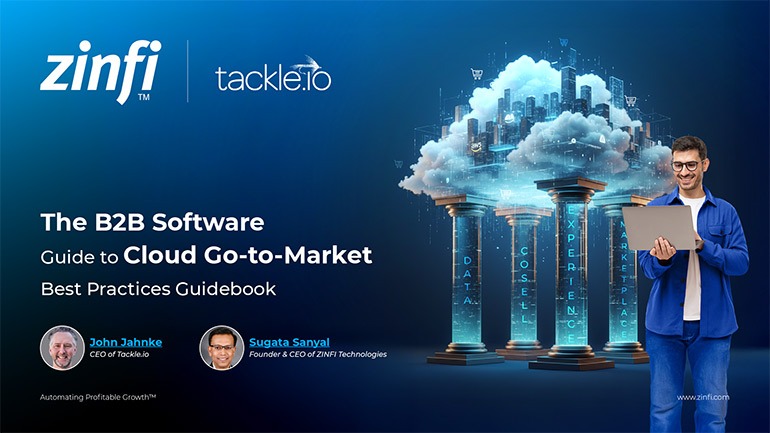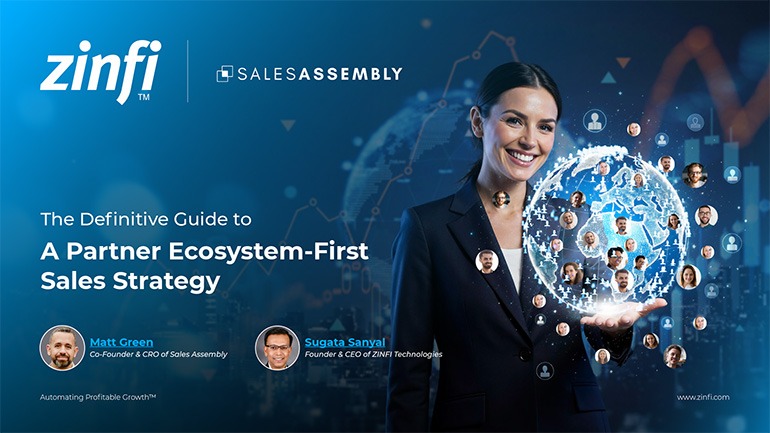Best Practices Articles

Why PRM Software Needs to Focus on Enabling Customers for Change Management
Partner relationship management (PRM) software is a fast-growing category in channel management today. However, most PRM software providers miss the fundamental idea behind such a platform and tend to provide limited, monolithic applications that are tied closely to web portal management software. These providers neglect to address a core requirement for PRM software: helping vendors automate workflows to manage the full spectrum of channel management activities, beginning with partner recruitment and onboarding, and moving on to partner training, enablement and management. In this article, we will focus on why PRM software needs to focus on process automation, and why it needs to be readily configurable without vendor intervention.
No matter how big or small your channel is, you are most likely doing one of the following things this year: recruiting new or existing partners into your program, training all or some of them in various aspects of your products and services, enabling them with various marketing and sales tools and programs, and incentivizing them with rewards & rebates, market development funds and other programs. Now, when you look back at the last year or forward to the next year, some or all of these activities may or not be relevant; from year to year your primary channel program goals may focus on a different set or combination of initiatives. The problem with most PRM software today is that it fails to address this variability and changing focus, which is characteristic of most organizations marketing and selling through the channel.
Most PRM software tends to focus on a few core things such as making dynamic web page content available to various partner groups; uploading marketing, sales and technical documents for partners to download, read and may be even share in a co-branded fashion with their end-customers; or perhaps providing a form or two for deal registration and/or incentive applications. The challenge with these types of software platforms is they are very hard to change, adapt and modify to address the ever-changing nature of channel programs. If you set up a form with specific fields for, let’s say, review or approval flow, chances are a year or so down the road, if not sooner, you will have to change those forms, fields and workflows. But most PRM software today fails to address this fundamental need for change management within the channel management category.
Now, partner marketing management tools—what Forrester calls through-channel marketing automation (TCMA)—don’t need to be quite so flexible. These tools tend to address a common set of activities, like email marketing, event marketing, microsite marketing, search, social, syndication, etc.—and the way you carry out these activities tends to be consistent across most organizations. While your actual tactics and combination of tactics may change, in the end the way you conduct email marketing to 100 partners is essentially no different from the way you reach out to 10,000 partners. In both cases, you may or may not require drip marketing or nurturing, but if you do you will use essentially the same set of tools and workflows.
However, this is NOT the case with workflows for partner relationship management.
For example, the one organization can greatly vary from another in the way it defines, manages and changes market development funds (MDF) programs. The same applies to other PRM activities like partner recruitment, onboarding, business planning, contract management, lead management, incentives management, etc. Unfortunately, most PRM software today takes a monolithic approach to building software and hard-codes a specific instance for their customers using professional services. If you want to be able to change anything down the road on your own, you are pretty much out of luck. You will have to reach out to your PRM software vendor and have them recode your web pages, forms and workflows, and—depending on the nature of these changes—you may end up paying an arm and a leg to do so.
This is where ZINFI’s approach to PRM software is fundamentally different. Our platform is powered by MAGIC: mobile, adaptive, global, intelligent and configurable tools. These MAGIC tools enable ZINFI’s customers to fully set up their forms and workflows on their own, and then dynamically change them as required with no help from ZINFI. While ZINFI can certainly perform these changes for its customers using its professional services team, the fact is that these MAGIC tools are so easy to use—with intuitive drag-and-drop functionality—that most customers can master setting up automated workflows, customized reporting and other functions in minutes on their own using built-in capabilities in ZINFI’s PRM software platform.
Whether or not you end up using ZINFI, if you are considering procuring PRM software, be sure to investigate how easy or difficult it will be to make changes to the platform once you have deployed it. Without fully configurable PRM software that you can manage on your own, you won’t be able to manage your workflow-related changes without incurring extra costs, and this will not only increase your total cost of ownership (TCO), but also delay implementation of any new program ideas you may have. The good news is that, over the last few years, the world of PRM software has changed rapidly and matured. Take a few extra hours during your sourcing process to go deeper under the hood and see what level of control different platforms can provide you to automate your channel, and make changes to your workflows, in a way that works for you.
Best Practices Guidebook
 Hyperscalers, ISVs, and AI: Shaping the Future of B2B Software Distribution
Hyperscalers, ISVs, and AI: Shaping the Future of B2B Software DistributionDownload for FREE
 Definitive Guide to a Partner Ecosystem-First Sales Strategy
Definitive Guide to a Partner Ecosystem-First Sales StrategyDownload for FREE
 The Partner-Led Digital and AI Transformation Best Practices
The Partner-Led Digital and AI Transformation Best PracticesDownload for FREE
 Startup Talent Recruitment: Hiring Missionaries, Not Mercenaries
Startup Talent Recruitment: Hiring Missionaries, Not MercenariesDownload for FREE
 The Future of Partner Relationship Management with AI in Partnerships
The Future of Partner Relationship Management with AI in PartnershipsDownload for FREE
 Cybersecurity for the 99%: Strategies from the Frontline
Cybersecurity for the 99%: Strategies from the FrontlineDownload for FREE
 Mastering Partner Relationships: A Strategic Approach to Business Growth
Mastering Partner Relationships: A Strategic Approach to Business GrowthDownload for FREE
 The Smart Manufacturing Playbook: Industry 4.0 Transformation
The Smart Manufacturing Playbook: Industry 4.0 TransformationDownload for FREE
 Mastering Partner Relationship Management: Keys to SaaS Channel Success
Mastering Partner Relationship Management: Keys to SaaS Channel SuccessDownload for FREE
 Navigating the AI Revolution: Guide for Partners in the Microsoft Ecosystem
Navigating the AI Revolution: Guide for Partners in the Microsoft EcosystemDownload for FREE
 Mastering the Modern Buyers Journey: Sales Leader’s Guide to AI & Engagement
Mastering the Modern Buyers Journey: Sales Leader’s Guide to AI & EngagementDownload for FREE











